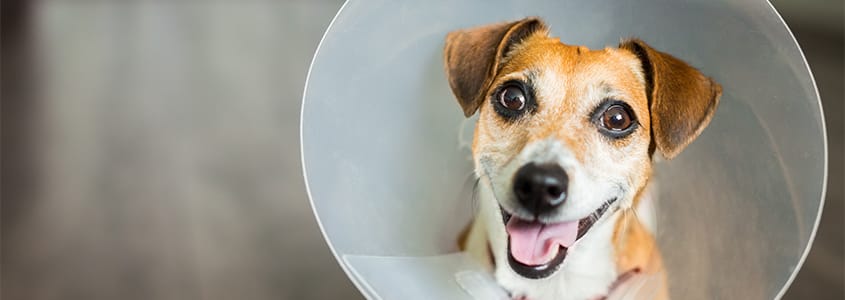What is the ACL or CCL?
The anterior cruciate ligament (ACL) is a thin connective tissue in the middle of our knees.
When we talk about this connective tissue in dogs it's called the cranial cruciate ligament (CCL) and it connects the dog's tibia (bone below the knee) to their femur (bone above the knee).
The CCL is always load bearing because the dog's knee is always bent when standing.

Differences Between ACL & CCL Injuries
ACL injuries in people are particularly common in athletes. These injuries typically occur due to an acute trauma stemming from a sudden movement such as a jump or change of direction. In dogs, CCL injuries tend to come on gradually, becoming progressively worse with activity until a tear occurs.
Symptoms of ACL Injuries in Dogs
The most common signs of a CCL injury are:
- Stiffness (typically most noticeable after rest, following exercise).
- Difficulty rising and jumping.
- Hind leg lameness and limping.
Continued activity on a mildly injured CCL will cause the injury to worsen and symptoms to become more pronounced.
Typically, dogs suffering from a single torn CCL will begin favoring the non-injured leg during activity which often leads to the injury of the second knee. Approximately 60% of dogs with a single CCL injury will go on to injure the other knee within a relatively short period of time.
Treating ACL Injuries in Dogs
If your dog has been diagnosed with a CCL injury, there are a number of treatment options available from knee braces to surgery. When determining the best treatment for your dog's CCL injury, your vet will take your dog's age, size, and weight into consideration as well as your dog's energy level and lifestyle.
Treatment Options
Knee Brace
Treating a CCL injury with a knee brace is a non-surgical option that may help to stabilize the knee joint, and give the ligament time to scar over and repair itself. Treating CCL injuries through the use a knee brace may be successful in some dogs when combined with reduced levels of activity.
Extracapsular Repair - Lateral Suture
This surgery involves replacing the torn ligament with an artificial ligament on the outside of the joint. This ACL surgery is typically recommended for small to medium sized dogs weighing less than 50lbs.
Tibial Plateau Leveling Osteotomy - TPLO
With this surgical technique, the need for the CCL ligament is eliminated by cutting and flattening the tibial plateau, then stabilizing it in a new position with a plate and screws.
Tibial Tuberosity Advancement - TTA
TTA surgery also eliminates the need for the CCL ligament by cutting the top of the tibia, moving it forward, and then stabilizing it in its new position with a stainless steel metal plate.
Recovery from ACL Surgery
Every dog is unique, and not all dogs recover at the same speed. Follow your vet's advice and never force your dog to do exercises if they resist. Recovery from ACL surgery takes time! Expect your dog to require 16 weeks or longer to have complete healing and return to normal function.

